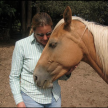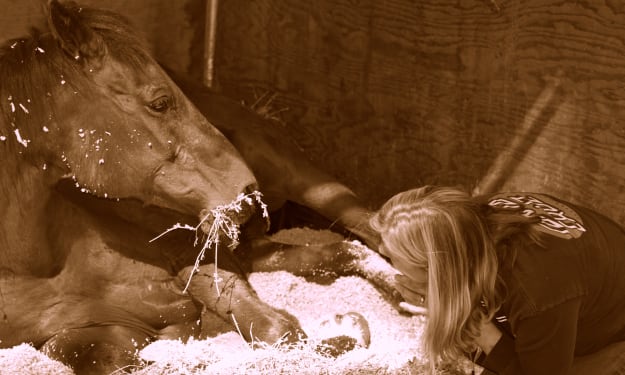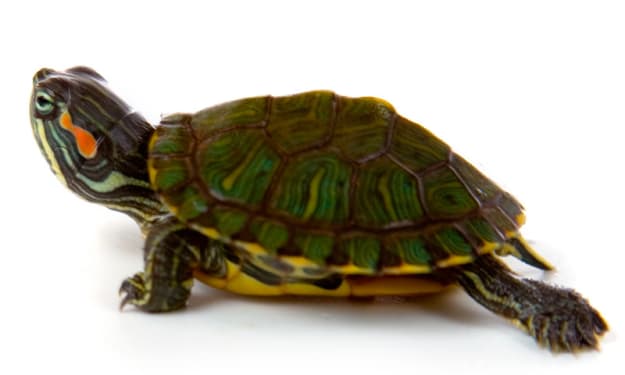For The Love Of Horse
Creating Horse Rescue & Living With Miracles

~ Chapter 1
The Crazy Horse Lady
Soaking up the sun overlooking the harbor is a delightful way to spend a Friday afternoon. The tink-tink sound of the shrouds or cables clinking against the sailboat masts in the breeze made music with the squawking seagulls. Seaside afternoons were crisp and welcoming. I was lifting a refreshing glass of chilled chardonnay to my lips. The chatter of the crowd around me was telltale that folks were busy celebrating an ended week of work. I wasn’t trying to eavesdrop when a voice behind me caught my attention. “They poop when you let them.” Well I knew instantly what they were discussing. God knows our dogs drag us all over the neighborhood peeing and squatting as they please. We carry plastic bags around tidying up after them like indentured servants. Cats would likely fall off their fence boards in laughter at the notion of being so controlled, but not our beloved horses. They serve and love and take what we hand out in complete silence.
My husband, Dave shot me a look as if to inquire, “Where are you?” I mentally snapped back to our table and the guests in front of me. I smiled and reluctantly refocused my attention on the conversation at hand, but I wasn’t successful. My mind began to wander. Why do people control horses like that? I pondered the question. In all my years of spending time in the company of these magnificent creatures, I have witnessed unnecessary control and unfortunately a lot of brutality on the part of humans. Once again, that little nagging voice in my head popped in. It’s the voice I have been trying to ignore for many years. The voice was demanding once again for me to recognize that the time had come for me to ask the enormous question. Why? Why are horses treated so poorly in every corner of the world?
Outright equine abuse is obvious and prevalent in many cultures. One would hope the majority of horse-loving people would find these actions cruel and brutal, but these actions either directly (by being an incident to view) or indirectly (by being an abusive method to create a desired effect) provide entertainment for some people and make money for others. Thus, these many practices have become entrenched in many cultures, still exist, and unfortunately are very widely accepted.
The hard part is every culture is doing something abusive, yet they all believe their actions, their culture doesn’t count, and that they are exempt. It doesn’t seem to make a difference that the general opinion outside the culture views it as abuse. So the horse loses in every culture and on every playing field. Those in competition call it “sport” and the abuses have been well documented for years. Other opportunities are deeply ingrained and regarded as cultural events. We can look at what is deemed Blatant Abuse. For example; Mexican-style rodeos, Charreadas are a national sport in its home country and are host to several cruel and barbaric events. Of ten different competitions, six of them are horrifically abusive to horses. One such event is titled Horse Tripping. Points are awarded for literally tripping horses by running them, lassoing their legs and “tripping” or having them crash to the ground. Those that survive the first round are sent back through again and again until death. Another example of blatant abuse is found on the other side of the world in Europe. Originating in Germany, Rollkur has been deemed extremely abusive. This practice in equestrianism defined as "flexion of the horse's neck achieved through aggressive force" is banned by the world governing body, the International Federation for Equestrian Sports (FEI). The problem is it is still occurring. Twelve years since 2006, with the first public outrage of this abusive training technique, the FEI continues to ignore the tens of thousands of equestrians who have protested the use of Rollkur. I have seen photos of horses in head harnesses that enforce this position for hours. How must that feel for a horse? Close your eyes and imagine standing against a wall, now slide down the wall, your back vertical and your thighs bearing the weight of your body. How long can you do it? How long before your legs scream in pain, and then you begin to cramp. You can’t move to escape the burning. Next comes panic. Would you lose your mind? This is Rollkur for a horse.
One last example of blatant horse abuse occurs in the world of Tennessee Walking Horses. Soring involves the intentional infliction of pain to a horse's legs or hooves in order to force the horse to perform an artificial, exaggerated gait. Caustic chemicals—blistering agents like mustard oil, diesel fuel, and kerosene—are applied to the horse's limbs, causing extreme pain and suffering. A particularly egregious form of soring, known as pressure shoeing, involves cutting a horse's hoof almost to the quick and tightly nailing on a shoe, or standing a horse for hours with the sensitive part of his soles on a block. This causes excruciating pressure and pain whenever the horse puts weight on the hoof. In the arena, when the Tennessee Walking horse is made to move, the horrid look that is desired is titled the ‘Big Lick'. Sad? Yes. Disgusting? Now you can understand why the nagging voice in my head won’t go away.
My focus and bigger concern start with the people who are not part of these titled barbaric practices. They are the everyday horse folk that believe in their heart that they are doing right by their horses. These are the horse people that think they are not abusing their horses in any way. Yet, I believe they are. The horses are suffering in silence right under the eyes of all humanity. These people partake in subtle yet damaging choices that in my opinion keep the magical partnership from ever happening and keep the abuse alive and well of the horse they claim to love.
I would like to shed light on their accepted choices for handling their horses, remember, their beloved horses. If this information can be shared and understanding can happen, maybe, just maybe the world for horses will improve.
Many years ago I thought that there were lots of different methodologies that work well when training horses. I wasn’t suggesting one way as the only way. But as I watched, learned, and studied the really great trainers in action, I had to reconsider my statement. There is only one way to achieve remarkable results when working with horses, and that is with relationship and trust training. Each respected trainer working with the horse had developed the ability to create trust and understanding, and went on to see amazing results.
I state this clearly and confidently because horses when given the chance are more than willing companions. Think about that for a moment. If the horse is not a willing companion, it is the responsibility of the horse handler to figure out and examine why. Why is this true? Because horses are honest by nature and being honest is all they know. They don’t lie, manipulate, create agendas or become difficult for the fun of it. They live in the moment, each moment every day of their lives. If there is a problem, it is simply never the horse’s fault. I also witness that all disciplines of riding can be done without ever intimidating, coercing, or abusing the horse. Yes, you read that correctly. The disciplines of dressage, english equitation, jumping, western roping, barrel racing, reining and cutting, trail riding, and even, of course, some horse racing. I have witnessed partnerships in each of these disciplines where horse and rider are one. There is no abuse present. Of course as one can imagine it is not easy to accomplish this level of expertise! It takes longer, in some cases much longer because you’re approaching ‘training’ with a completely new mindset.
This mindset is one of building trust and creating relationship. It’s about giving the horse the chance to understand. Trainers refer to it as ‘setting the horse up for success’. Without this mindset, everything else a trainer does is only promoting his or her own agenda. It can be as simple as a timeframe to be met, but it is still the person’s agenda, not the horses. A great read addressing this very topic of keeping your training on the horse’s agenda is a book titled “Gallop to Freedom” written by Magali Delgado and Frederic Pignon.
In 2003 the remarkable talents of these two were brought to the stage in a never seen before production called Cavalia. The spectacular equestrian-themed extravaganza demonstrated the powerful connection they have developed with their beautiful horses. The relationship demonstrated so much more than “training.” This beautifully choreographed event was a mesmerizing dance between horse and human, and the show contained lots of riding, not just poetic on-the-ground movements. We can all learn from these experts. In the last decade, the miracles I have witnessed between horse and human have convinced me of my truth. The good news is there is a movement out in the world of horses, and it's gaining recognition. Horse folks are beginning to see the light. Trainers of every background and discipline are all beginning to see there is a gentler, more effective way to do things, All things when working with horses and it’s no surprise the results are phenomenal.
The not-so-good news is it is taking time. Wouldn’t every horse person choose kinder methodologies if the result produced happier, healthier horses and better partnerships? There is a bigger picture looming, and I call it the human agenda. The human agenda will always get in the way of what I believe to be fair, honest, just, and better-made partnerships. It’s my title for all the decisions and actions humans make while living on this planet earth. A human being’s desire for wealth, status, or convenience are the motivations driving the destruction of natural habitats and the abuse or obliteration of animal populations all over the globe. The sustainability of our world and the animal populations we share it with remain threatened and a safe future for them remains bleak. Whether or not you believe in “Global Warming” doesn’t matter. These are facts, plain unarguable statistics that shed light on a very real tragedy. I have read humans are referred to as a parasite on the planet earth. It’s much bigger than the world of horses. But for now, we are speaking about horses.
“Hey” The quiet patient husband murmured. “What will you order?” Jolted back once again to my company, I smiled and metaphorically stepped down off my soapbox. Choosing my entrée, I heard the voice again. I was annoyed; such expertise, such authority came bellowing from behind me. “If she is that difficult for you, maybe it’s time for a change! Maybe you should get rid of her?” Ugh, it was all I could take! Get rid of her? Don’t we get rid of poison oak, smelly shoes, and old food? If I were a smoker, I would have had to go outside for a cigarette. I had visions of chucking my chardonnay over my right shoulder. I wanted to stand up and turn around and say in my best smart-ass tone of voice, “Oh Pardon me, I didn’t realize you were taking up space behind me, sucking up usable air. Sit up straight in your chair! No, you cannot use the restroom! Now, read the menu and wait your turn to order! Maybe we should get rid of you?” Well, I don’t smoke, and I happen to have lovely manners, so I just glared at my husband who has seen the familiar frustrated look before. “You ok?” he asked. “Trying” I responded.
It takes a crazy passion or perhaps a crazy person to begin the task of changing the mind of a nation. I hope to be the former I think I may indeed be the latter. In any case, it’s a long road to understanding that the way many horses have been treated for years isn’t the way they need to be treated at all. A long road I am paving with my love, sweat, and hell-bent intention. I invite you to come and discover what I believe to be the true nature of horses. I would like to share with you the ups and downs of dreaming about effecting change, creating, and living horse rescue. Along the journey, we will examine horse intelligence, their capacity to forgive, and most importantly their role as healers. I will share some of my personal stories as my life becomes so entwined with my rescues that I can’t imagine getting through a crisis without them! If you’re ready to follow along in the many adventures of horse rescue, better keep in mind, it is not easy, nor is it fair. It is not a paying gig, and the rescues don’t always appreciate the intervention…at least not at first anyway. Come along and see for yourself. The time for a new approach has arrived. I believe in my heart of hearts that the good in people can be brought forth, and that understanding can indeed affect change. I choose to believe that each one of us can glean something from this writing and do better by our horses. The time to recognize the horse has arrived and the time to protect them from abuse is now.
About the Creator
Lynn Hummer
Creating and Living Horse Rescue has brought me to my original love of writing. If you love the insight animals bring to life and the mysteries of interspecies communication, my work will resonate with you. I find intrinsic value in us all






Comments
There are no comments for this story
Be the first to respond and start the conversation.